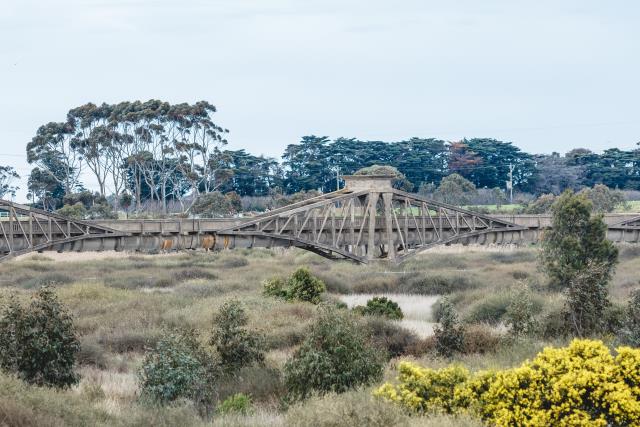The Friends of the Barwon River Ovoid Sewer Aqueduct are calling for Barwon Water to rethink its plans for the heritage-listed structure before it is partly demolished in the coming months.
It’s expected works to remove four of the 110-year-old aqueduct’s 14 spans will be begin within months, after Barwon Water received approval from Heritage Victoria in 2020.
The demolition of the four spans across the Barwon River is part of Barwon Water’s Porronggitj Karrong project to open up public access to the river and 66 hectares of surrounding land in Breakwater, which will be turned into a cultural precinct in partnership with the Wadawurrung Traditional Owners Aboriginal Corporation.
Friends of the Barwon River Ovoid Sewer Aqueduct spokesperson David Le Lievre said allowing the structure to be partially demolished was “heritage vandalism”.
The 756-metre bridge began construction in 1912 and was one of the first regional sewerage systems in regional Victoria, connecting a pipe from Geelong to Black Rock.
“It’s a beautiful structure and when you think about it, it’s one of the most important historical structures we have,” Mr Le Lievre said.
“Sewerage is fundamental to a city and that structure would have saved hundreds of thousands of lives over its time.
“The person who designed it was clearly more of an architect than an engineer because it’s beautiful but the reinforced concrete isn’t thick enough in some places … but it would be a shame to lose this structure.
“It doesn’t make sense to me why anyone would want to get rid of this history.”
Mr Lievre said he wanted to see the aqueduct maintained and turned into a tourist attraction.
“Once you lose history, you can’t get it back,” he said.
“A lot of people wouldn’t even know this was there because it’s all closed off and hidden away.
“If you put in a decent path through the area and a café or something there and the City of Greater Geelong promoted it as an attraction, people would definitely come and have a look at it.
“It’s something different you wouldn’t see anywhere else.”
The aqueduct was used in its original capacity by Barwon Water until it was decommissioned in 1992, when an underground sewer pipe was built.
The area around the aqueduct, including the Barwon River underneath, has been closed to the public since 1995 due to safety fears about falling concrete.
Barwon Water planning, delivery and environment general manager Seamus Butcher said the organisation had considered all options for the aqueduct.
“Following extensive community and stakeholder engagement, we undertook detailed investigations on all possible options for managing the safety risks posed by the Ovoid Sewer Aqueduct, including those that community heritage groups suggested,” Mr Butcher said.
“We investigated options for improving, stopping or slowing the aqueduct’s natural degradation, but technical advice made it clear this was not viable from a safety and cost perspective. The best option was to remove several spans across the river so people can enjoy the area safely.
Mr Le Lievre said the Friends group wanted to see culvert-like structures installed to mitigate the risk of falling concrete when people passed under the aqueduct.
“Removing the part that crosses over the river and leaving the rest doesn’t make sense because that’s the section that you would see if the place was opened up,” he said.
“But more than that, it’s just disappointing that Barwon Water wants to and has been allowed to destroy part of a heritage-listed structure.”
Removing four spans of the aqueduct that cross the Barwon River will allow for the river to be reopened to kayakers and canoers and also provide space for a walking track to be installed.
Heritage Victoria approved the plan in 2020 and said “evidence was provided as to the unacceptable safety risk to the public of the aqueduct spans crossing the Barwon River”.
As part of the $6.5 million project, Barwon Water will also have to prop and stabilise the remaining 10 spans of the aqueduct, which will remain.
Early works to clear vegetation and prepare the site has already begun, with propping works set to start soon and demolition works after that.







